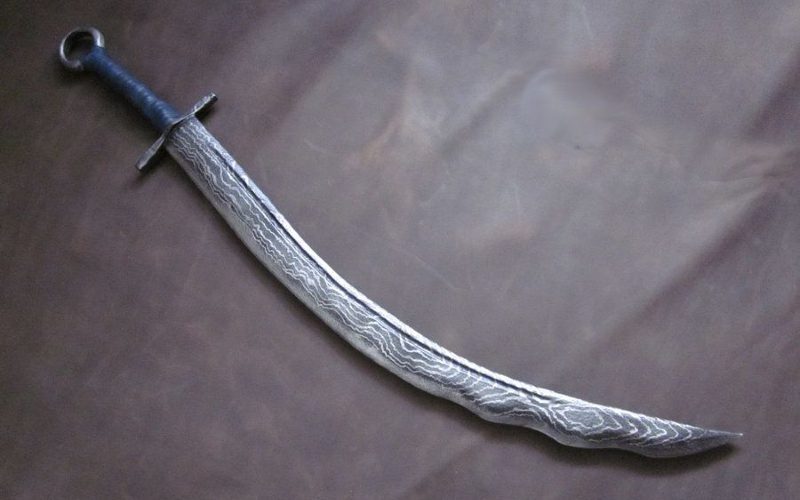What Is the Difference Between a Sword and a Sabre?
Posted by SwordsSwords on Jun 28th 2024
Swords and sabres are two iconic weapons that have played significant roles in history, culture, and even modern collectibles. While they may appear similar at first glance, these weapons have distinct design, use, and historical context differences. This guide will compare swords and sabres to help you understand what sets them apart.
Design Differences
Swords
Swords are versatile weapons with a straight blade designed for cutting and thrusting. They come in various shapes and sizes, each tailored for specific purposes and fighting styles. From the medieval longsword to the Japanese katana, swords have evolved to meet the demands of different combat scenarios and cultural preferences. The craftsmanship involved in making a sword often reflects the technological advancements and artistic sensibilities of the era in which it was forged.
Key Features
- Straight Blade: Swords typically have a straight, double-edged blade.
- Guard: The hilt usually features a crossguard to protect the hand.
- Point: The tip of the sword is designed for thrusting.
Types of Swords
- Longsword: A medieval European sword used with two hands.
- Katana: A Japanese sword known for its sharpness and curved blade.
- Rapier: A slender, sharply pointed sword used for thrusting.
Sabres
Sabres are a type of sword with a curved, single-edged blade designed primarily for slashing. They were commonly used by cavalry and are known for their effectiveness in mounted combat. The curve of the blade allows for powerful, sweeping cuts that can be executed with great speed and precision. Sabres are often associated with the romantic image of the cavalry charge, where mobility and rapid, decisive strikes were key.
Key Features
- Curved Blade: The blade is curved, which enhances the cutting action.
- Single Edge: Sabres have a single sharpened edge.
- Guard: Often features a knuckle guard for hand protection.
Types of Sabres
- Cavalry Sabre: Used by mounted troops, featuring a pronounced curve.
- Cutlass: A short, broad sabre used by sailors.
- Shashka: A traditional Russian sabre with a slightly curved blade.
Historical Context
Swords
Swords have been used across different cultures and time periods, each developing unique styles and techniques. They were often symbols of power, honor, and status. The evolution of sword design reflects the changing nature of warfare and the development of metallurgical techniques.
Historical Significance
- Medieval Europe: Swords like the longsword and arming sword were central to knightly combat.
- Feudal Japan: The katana was a symbol of the samurai's honor and skill.
- Renaissance Europe: The rapier became popular for dueling and self-defense.
Sabres
Sabres became prominent in the early modern period, particularly among cavalry units. Their design was optimized for the needs of mounted troops, who required a weapon that could deliver quick, effective strikes from horseback.
Historical Significance
- Napoleonic Wars: Cavalry units wielded sabres for their effective slashing capability.
- American Civil War: Sabres were standard issue for cavalry on both sides.
- Eastern Europe and Asia: Sabres like the shashka were used extensively by Cossack and Ottoman warriors.
Usage and Techniques
Swords
Swords are versatile and can be used for both cutting and thrusting. They require a mix of technique and strength, with a variety of combat styles developed around different types of swords.
Techniques
- Thrusting: Effective for penetrating armor or finding gaps in defense.
- Cutting: Powerful slashes can incapacitate opponents.
- Parrying: Using the crossguard to block and deflect attacks.

Sabres
Sabres are optimized for slashing, making them ideal for fast, sweeping attacks. Their design makes them particularly effective in dynamic, fast-paced combat scenarios.
Techniques
- Slashing: The curved blade maximizes cutting power with each swing.
- Mounted Combat: Effective for striking opponents from horseback.
- Defensive Moves: The guard protects the hand while blocking or parrying.
Collecting Swords and Sabres
Swords for Sale
For enthusiasts and collectors, many swordsfor sale cater to various interests, from historical replicas to anime swords inspired by popular culture. Whether you're looking for cool swords for display or functional real swords for sale, the market offers a wide range of options.
Sabres for Sale
Similarly, sabres are popular among collectors for their historical significance and unique design. There are many swords to buy that include sabres, allowing you to own a piece of history.
Where to Buy
For those interested in purchasing authentic and high-quality swords and sabres, reputable retailers like swordsswords.com offer a vast selection of real swords for sale. From anime swords to historical replicas, you can find a variety of cool swords to suit your needs.
Conclusion
While swords and sabres share similarities as bladed weapons, their differences in design, use, and historical context set them apart. Cool Swords are versatile with a straight blade for cutting and thrusting, while sabres feature a curved blade optimized for slashing. Understanding these distinctions can help collectors and enthusiasts appreciate the unique qualities of each weapon.

